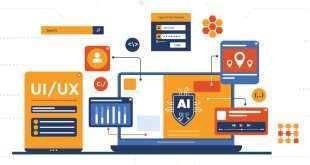Welcome to our comprehensive guide on web accessibility for wearable tech, where we explore the pivotal role of inclusivity in the ever-evolving world of mobile technology. As wearable devices continue to gain popularity and become an integral part of our daily lives, it is essential to ensure that these innovative gadgets are accessible to all individuals, regardless of their abilities. In this blog, we delve into the significance of web accessibility, the challenges and solutions specific to wearable tech, and how this synergy can lead to a more inclusive and user-friendly digital landscape.
Understanding Web Accessibility and Its Impact
Web accessibility is the practice of designing and developing websites and digital content to be usable by individuals with disabilities. It encompasses various aspects, such as visual, auditory, cognitive, and motor impairments. Ensuring web accessibility is not only a legal and ethical responsibility but also a strategic advantage for businesses, as it broadens their potential audience and enhances user satisfaction.
The Rise of Wearable Tech and Its Potential
Wearable technology has emerged as a game-changer, offering a seamless integration of technology into our daily routines. From smartwatches and fitness trackers to augmented reality glasses, wearable devices have the power to enhance our productivity, health, and overall experience in the digital realm.
Empowering Users with Disabilities
Wearable tech has the potential to empower users with disabilities by providing them with assistive features and functionalities. For instance, smartwatches equipped with screen readers can read out notifications and messages, making it easier for individuals with visual impairments to stay connected.
Enhancing Accessibility on the Go
The mobility and convenience of wearable devices enable users to access information and services on the go. For individuals with mobility challenges, wearable tech provides a more accessible and independent means of interacting with digital content, eliminating the need for traditional input devices.
Challenges of Web Accessibility in Wearable Tech
While wearable tech holds immense promise, it also presents unique challenges concerning web accessibility.
Limited Screen Real Estate
Wearable devices typically have smaller screens compared to traditional devices like smartphones and laptops. Designing user interfaces that are both intuitive and accessible on these limited screen spaces requires thoughtful consideration and creativity.
Interaction Methods
The interaction methods available on wearable tech, such as voice commands and gestures, can pose challenges for users with certain disabilities. Ensuring that these methods are inclusive and efficient is essential for a positive user experience.
Best Practices for Web Accessibility in Wearable Tech
To overcome the challenges and maximize web accessibility in wearable tech, developers and designers can implement the following best practices:
Clear and Concise Content
Keeping content concise and well-structured is vital for users on wearable devices. Avoiding clutter and providing essential information upfront ensures a seamless user experience for all users.
Voice Commands and Speech Recognition
Implementing robust voice commands and speech recognition capabilities can greatly benefit users with mobility or visual impairments, enabling them to interact with the device naturally.
Intuitive Gestures
When designing interactions through gestures, prioritizing simplicity and intuitiveness is crucial. Users should be able to navigate and interact with the device easily, regardless of their abilities.
The Impact of Wearable Tech on the Future of Accessibility
The convergence of web accessibility and wearable tech has the potential to transform the landscape of digital inclusivity. As wearable devices become more prevalent and sophisticated, their impact on the lives of individuals with disabilities will continue to grow.
Final Words
Web accessibility for wearable tech is not only a technological challenge but a moral obligation to create a more inclusive digital world. By embracing best practices and innovative design, we can ensure that wearable devices empower and enrich the lives of all users, regardless of their abilities.
Commonly Asked Questions
1. How does web accessibility benefit users of wearable tech?
Web accessibility ensures that users of wearable tech can access and interact with digital content effortlessly, regardless of their disabilities, leading to a more inclusive and user-friendly experience.
2. What are the challenges of web accessibility in wearable tech?
Challenges include limited screen real estate, designing intuitive interaction methods, and catering to users with varying needs and abilities.
3. How can developers enhance web accessibility in wearable devices?
Developers can enhance web accessibility by implementing clear and concise content, robust voice commands, and intuitive gestures that accommodate users with diverse abilities.
4. What role does wearable tech play in empowering individuals with disabilities?
Wearable tech empowers individuals with disabilities by providing assistive features and enabling greater independence in accessing digital content and services.
5. How will the integration of web accessibility and wearable tech shape the future?
The integration of web accessibility and wearable tech will foster a more inclusive digital landscape, empowering individuals with disabilities and revolutionizing the way we interact with technology on the go.
 webfily
webfily



